When the cold season begins, in every house, just in case, paracetamol should be in the medicine cabinet. This drug is able to quickly eliminate the symptoms of colds and flu, relieve pain of a different nature. Is it safe to take this medicine for children, what are the rules for using the drug - the information will be useful to many readers.
Material Content:
- 1 Release forms for adults and children
- 2 Pharmacological action and indications for use
- 3 At what age can children be given
- 4 How long does the antipyretic drug begin to act?
- 5 Paracetamol: instructions for use for adults and children
- 6 Drug Interactions with Other Drugs
- 7 Contraindications, side effects and overdose
- 8 Analogues of an antipyretic drug
Release forms for adults and children
In pharmacology, paracetamol is presented as a separate drug, it is also part of a large number of medicines whose action is aimed at reducing fever and other signs of seasonal diseases, as well as for relieving pain attacks.
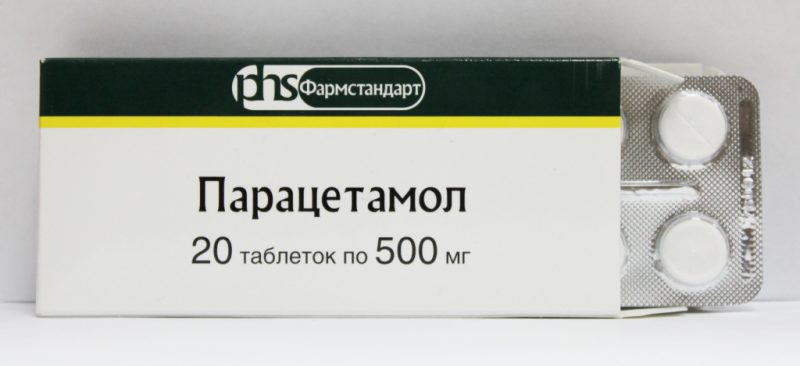
In order for the drug to be conveniently used at any age and with varying degrees of symptoms, the drug is available in various forms:
- tablet form (simple and effervescent preparation);
- suppositories;
- syrup;
- suspension.
Pills are considered more affordable. White or body pills may contain 200, 250 or 325 mg of paracetamol, effervescent soluble tablets of 500 mg, as well as additional components for ease of use.
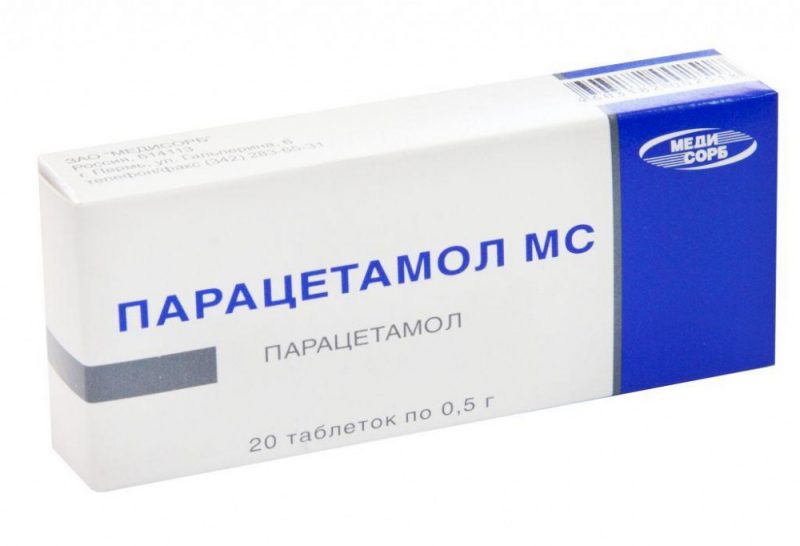
Most often, the active substance is combined with:
- starch;
- gelatin;
- milk sugar;
- calcium stearate;
- povidone;
- primogel.
Carton packaging holds 10 or 20 tablets.
A feature of rectal suppositories is the high speed of the drug.Therefore, this form is often used to bring down the temperature in the smallest patients. In addition to the active component (80, 170 or 330 mg), solid fats are included in the composition of the suppository, providing ease of administration of the drug. Suppositories for use by adult patients have a larger amount of active substance - 500 or 1000 mg. The package contains 5 to 10 pieces, depending on the dosage.
Especially for children who find it difficult to get a pill, a form of sweet clear syrup has been developed. To give a pleasant taste, raspberry flavoring and sweeteners are added to the medicine. The active substance accounts for 2.4% of the total composition of the drug. Ethanol (in small amounts), water, citric acid, riboflavin and propylene glycol are also present in the syrup.
The drug is poured into bottles of dark glass with a volume of 50 or 100 ml, in the package, in addition to the instructions for use, there is a measuring spoon for easy dosing.
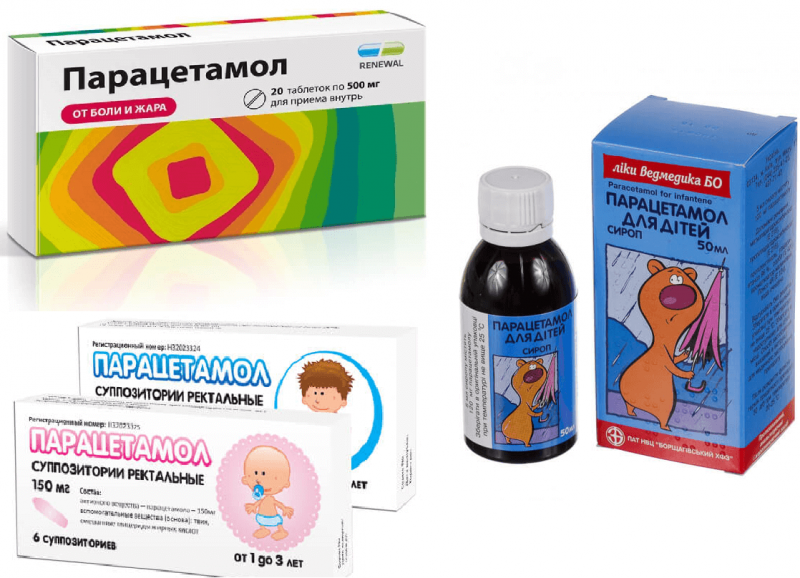
A suspension of paracetamol has a similar composition, a distinctive feature of this form of the drug is the absence of sugar. The liquid also has other flavors that provide a pinkish tint and strawberry flavor. Packaging - 100 or 200 mg vials.
Pharmacological action and indications for use
The main reason why the drug has become the most sought after drug is the reaction rate of paracetamol. When you need to act quickly, without delay, to remove unpleasant symptoms, he is always at hand.
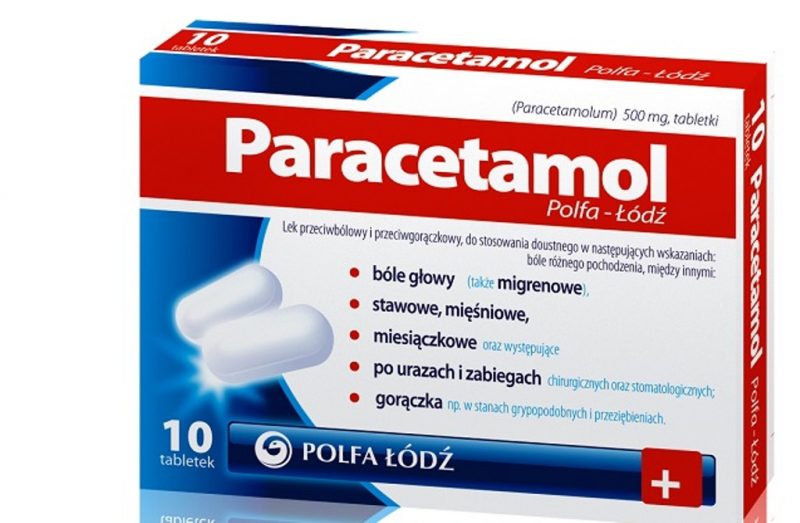
The drug has several pharmacological properties:
- stops, or reduces pain of a different genesis;
- reduces body temperature;
- slows down the onset of inflammatory processes in the body.
The effective action of the medium under discussion is due to origin. Paracetamol belongs to the group of phenacetin metabolites that directly affect the centers of pain and thermoregulation in the brain.
In addition, it is rapidly absorbed from the stomach and intestines. That is why the drug begins to act after an hour after administration.
What helps paracetamol? The drug is used as part of complex therapy to relieve fever and signs of inflammation, and as a separate tool to reduce pain.
Indications for the use of medicines with such an active substance are:
- fever with infectious diseases;
- migraine headache;
- muscle pain;
- hyperthermia after the introduction of the vaccine to the child;
- toothache;
- painful symptoms of neuralgia;
- injuries, bruises, cuts, burns;
- Reye's syndrome;
- pain during menstruation in women;
- joint pain.
Read also: indications for the use of noshpalgin
Depending on the form of the drug, it can be effectively used in the treatment of adults and children.
At what age can children be given
Age restrictions on taking the drug depend on the form of the drug. Paracetamol tablets are best given to small patients over 3 years old, because before this period it is difficult for children to swallow a bitter pill.
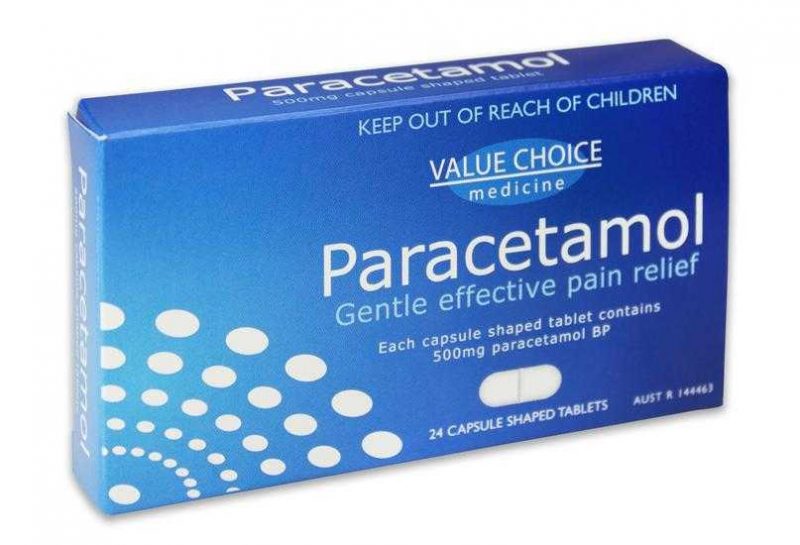
But the forms of the drug that are more convenient for this age — syrup or rectal suppositories — are recommended to be used no earlier than 3 months.
How long does the antipyretic drug begin to act?
The means based on the active substance of paracetamol deserve their popularity precisely due to their high speed of action. Already 20-30 minutes after the administration of the drug, it begins to act, completely penetrating into the tissues and fluids.

The maximum effect is achieved in one and a half to two hours, the temperature drops to normal levels, and the pain stops.
Paracetamol: instructions for use for adults and children
You can use the drug only after a detailed study of the rules, observing the dosage, depending on the age of the patient and the severity of the disease.
Suspension, paracetamol syrup for children
This form of medication is used to treat patients from 3 months.
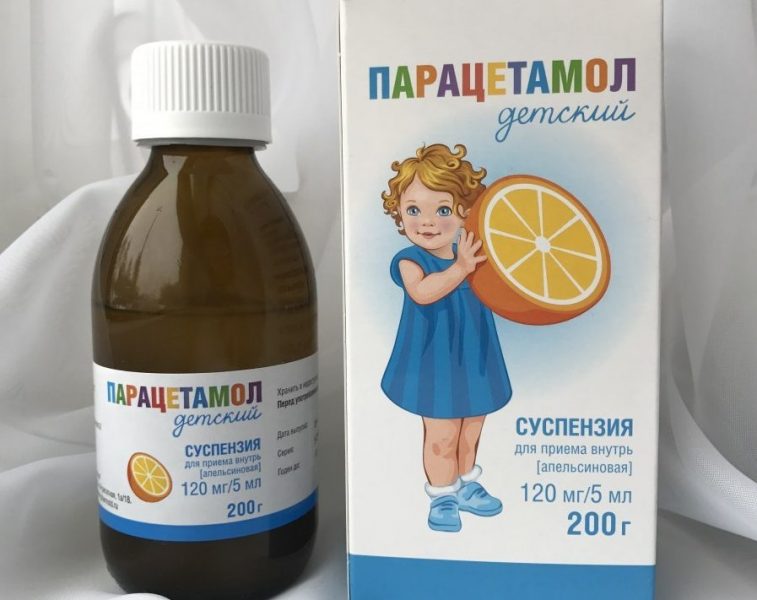
The necessary daily dose should be calculated based on the weight of the child: for 1 kg - 10 - 15 mg of paracetamol, divided into 3 - 4 doses.
Syrup and suspension Paracetamol for children is 2.4% composed of the active substance, that is, in a teaspoon (5 ml) is 120 mg of the desired medicine.
Therefore, the standard reception scheme looks like this:
- from 3 to 12 months - ½ - 1 teaspoon (2.5 - 5 ml) per day;
- from a year to 5 years - 1 - 2 teaspoons (5 - 10 ml);
- children 6 to 12 years old - 2 to 4 teaspoons (10 to 20 ml);
- adolescents from 60 kg of weight and adults - 4-8 teaspoons (20-40 ml of syrup).
It is important that more than 4 hours pass between doses. Such symptomatic treatment of children should not exceed 3 days.
Pills
This form of the drug is used after meals, after 1 - 2 hours, to ensure normal absorption in the blood. The pills should be swallowed with plenty of clean water.

Tablets are recommended for children from 3 years of age.
The standard scheme is indicated in the instructions.
| Age | Weight, kg | Single dose mg | The number of receptions per day | The maximum daily dose, mg |
|---|---|---|---|---|
| 36 years | 15 — 22 | 250 | 3 — 4 | 1000 |
| 7 - 9 years old | 23 — 30 | 350 | 3 — 4 | 1500 |
| 10 to 12 years | 31 — 40 | 500 | 3 — 4 | 2000 |
| More than 12 years | more than 40 | 600 — 1000 | 3 — 4 | 4000 |
Be sure to adhere to the four-hour interval between doses of the next dose of the drug. The course of therapy is no more than 5 days. If symptoms worsen, you should immediately consult a doctor.
Rectal suppositories for adults and children
There are suppositories with different contents of the active substance. Some are for adult patients, others are for children.
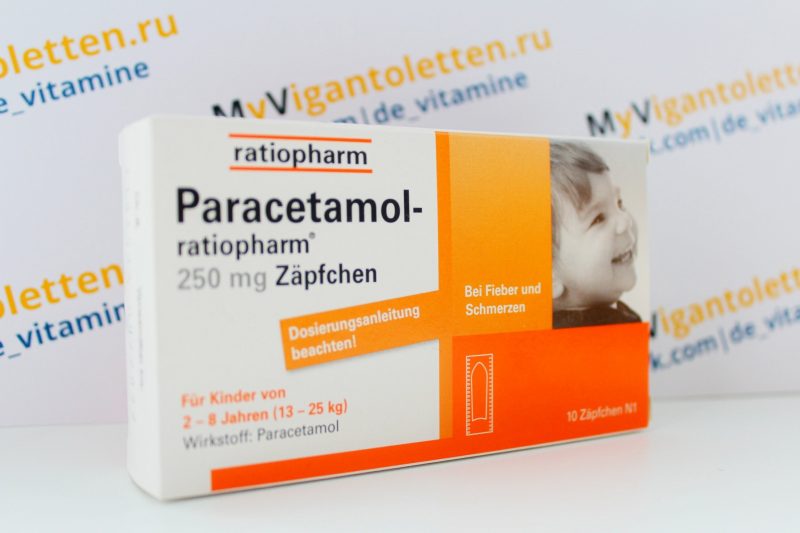
The number of milligrams of paracetamol in candles is different, therefore, first of all, you need to pay attention to the dosage of the drug.
Approximate single dose at different ages:
- 6-12 months - 50 - 100 mg;
- 1-3 years - 100-150 mg;
- 3 - 5 years - 150 - 200 mg;
- 5 - 10 years - 250 - 350 mg;
- 10 - 12 years old - 350 - 500 mg;
- more than 12 years - 500 - 1000 mg.
The number of applications per day is not more than four. The course of treatment is no more than 3 days.
Drug Interactions with Other Drugs
Each drug has its own characteristics of action when combined with other medicines. In order to avoid undesirable consequences after co-administration of drugs, it is necessary to take into account their influence on each other.

Paracetamol significantly increases the therapeutic effect of such drugs:
- caffeine;
- salicylic acid;
- codeine;
- group of antispasmodics;
- indirect coagulants.
But the simultaneous use of a substance with the following medicines, on the contrary, reduces the effectiveness of paracetamol and enhances toxic liver damage.
Among these drugs:
- barbiturates;
- antiepileptic drugs;
- Activated carbon;
- rifampicin;
- isoniazid;
- zidovudine.
It is important during treatment with paracetamol to exclude the use of other drugs that have the same active substance in their composition, carefully read the instructions for the drugs to avoid overdose.
Particular attention should be paid to the use of alcohol, that is, refusal from it during the treatment period. The fact is that ethyl alcohol in combination with paracetamol increases the risk of developing severe pathologies of the liver and pancreas.
Contraindications, side effects and overdose
Like all potent drugs, paracetamol should be used with caution and, following the instructions, choose other methods of pain relief or temperature reduction, if there are contraindications to use.
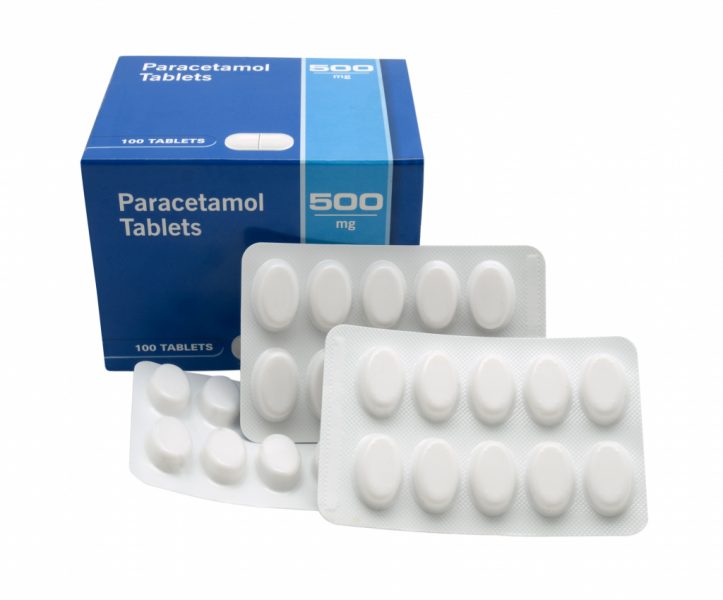
You can not take funds with this active substance in such cases:
- individual intolerance to components;
- age up to 3 months (for syrup and rectal suppositories), up to 3 years (for tablets);
- pregnancy in the first trimester;
- renal failure;
- hyperkalemia (elevated levels of potassium in the blood);
- bronchial asthma (allergens - aspirin or NSAIDs);
- liver pathology;
- viral hepatitis;
- ulcerative processes, inflammation in the digestive tract;
- internal bleeding;
- the period after coronary artery bypass grafting;
- chronic alcoholism with liver damage;
- age over 70 years;
- inflammation in the rectum (when using suppositories);
- period of breastfeeding.
In other cases, in the presence of certain diseases, you should carefully monitor the patient's condition after taking paracetamol.

With an increase in dose, poisoning with the drug is possible.
Exceeding the daily intake for adults of 10-15 g causes the following symptoms:
- acute pain in the stomach;
- nausea, bouts of vomiting;
- sharp pallor, blueness of the skin;
- loss of appetite;
- liver necrosis (the beginning of cell death);
- gastric bleeding;
- coma - in severe cases of overdose.
If you follow the instructions, do not exceed the recommended doses and intervals between doses of the drug, the likelihood of side effects is quite low.
Possible adverse reactions:
- allergy manifestations - skin rash, itching, swelling, Lyell's syndrome;
- nausea, diarrhea, upset stomach;
- epigastric pain;
- weakness, dizziness;
- anemia;
- decrease in blood sugar, platelets in the blood;
- sleep disturbances;
- activation of liver enzymes;
- heart rhythm failure;
- impaired kidney function;
- irritation of the rectal mucosa (with the use of suppositories).
If you continue to use paracetamol more than recommended in the instructions, there is a high probability of serious malfunctions in the liver and kidneys, up to the termination of the functioning of these organs.
Analogues of an antipyretic drug
Since, in addition to its quick action and effectiveness, the drug also has high toxicity, many doctors offer other options for medications in order to eliminate pain.
Similar characteristics are possessed by drugs that can quickly stop pain of different localization. The choice depends on the degree of pain and its origin.
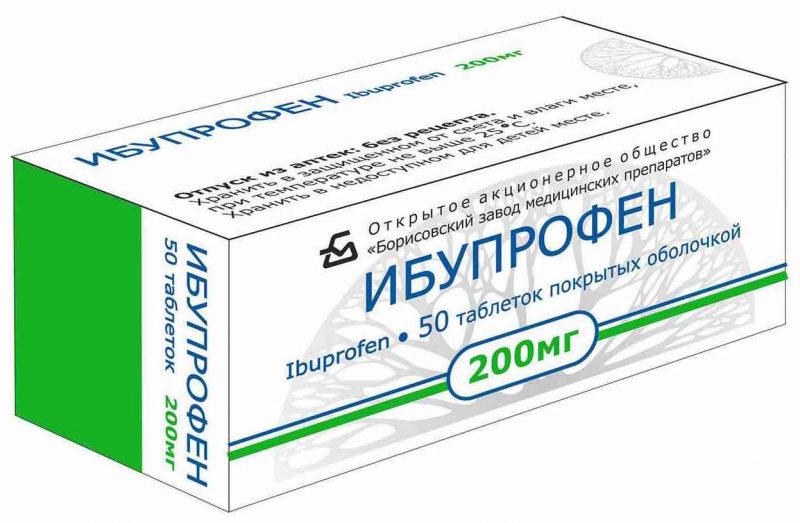
Among the common drugs:
- Ibuprofen
- Nurofen
- "Has";
- "Spazmalgon";
- Tempalgin;
- "Analgin";
- "Citramon."

If necessary, when you need to quickly reduce body temperature during a fever, adult patients can take:
- Naproxen
- Streamol;
- Voltaren;
- "Nimesulide";
- Diklak.
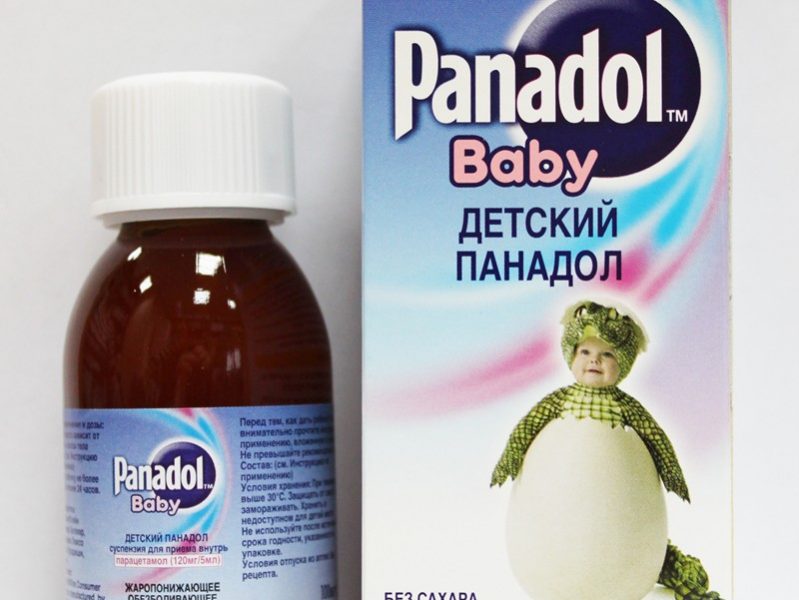
For a child's body, antipyretic drugs that are milder in their action are suitable:
- Efferalgan;
- "Panadol";
- Viferon;
- "Mexalen."
Each of the drugs has its own contraindications, so doctors do not recommend replacing them with analogues.












